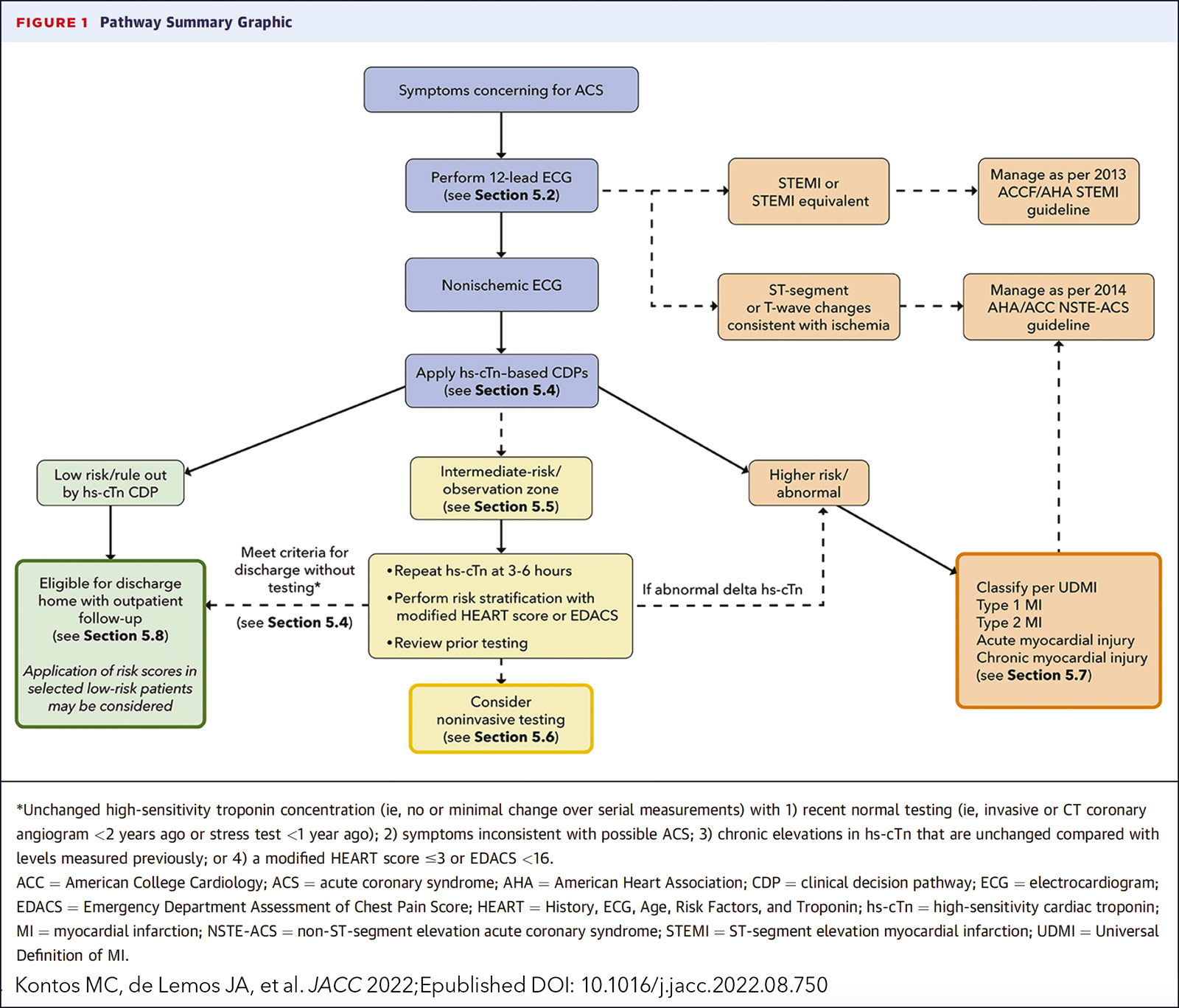New in Clinical Documents | ACC Expert Consensus Decision Pathway Focuses on Evaluation, Disposition of Acute Chest Pain in ED

The ACC's newest Expert Consensus Decision Pathway aims to provide structure around the rapid "evaluation and disposition of acute chest pain" in patients presenting to the emergency department (ED) for a possible acute coronary syndrome (ACS). The document, published in JACC, also encourages the use of rapid clinical decision pathways (CDPs) alongside high-sensitivity cardiac troponin I (hs-cTnI) assays that may help hospitals solve for some of the ED challenges.
"At the institution level, this Expert Consensus Decision Pathway recommends implementation of hs-cTn assays in conjunction with a CDP to reduce ED 'dwell' times and increase the proportion of patients with chest pain who can safely be discharged without additional testing," write Writing Committee Chair Michael C. Kontos, MD, FACC, and Vice Chair James A. de Lemos, MD, FACC, et al. "Successful implementation will decrease ED crowding and limit unnecessary testing."
The Pathway also urges a strategic focus at the patient level on "accelerating the evaluation process and matching the intensity of testing and treatment to patient risk." Engagement of a multidisciplinary team that includes emergency medicine, laboratory medicine, cardiology and hospital medicine specialties, along with careful ECG review, the inclusion of appropriate patients into a CDP that "combines hs-cTn measurements with risk assessment, and selective use of noninvasive testing" are key to this process.
"The ECG remains the best initial test for chest pain evaluation because it is rapid, inexpensive and provides critical diagnostic and prognostic information," say Kontos and de Lemos. They note that institutions should work to transition to hsTn assays given that their increased sensitivity and precision offer substantial advantages for the accelerated "rule out" of myocardial infarction and can eliminate the need for noninvasive testing in most low-risk patients.
Both Kontos and de Lemos, as well as the broader Writing Committee, stress that the CDP should augment – not replace – triage, treatment and disposition decisions and that a "provider's clinical judgment at the bedside remains an indispensable tool that may lead to different triage decisions than those suggested by the CDP."
For patients who are determined to be at intermediate risk, additional observation and/or additional noninvasive testing may be required. Patient factors, such as results of prior testing, availability of tests, timeliness of test reporting and institutional expertise should be considered when determining choice of noninvasive tests.

Clinical Topics: Acute Coronary Syndromes, Heart Failure and Cardiomyopathies, Noninvasive Imaging, Prevention, Acute Heart Failure
Keywords: ACC Publications, Cardiology Magazine, Acute Coronary Syndrome, Heart Failure, Secondary Prevention, Exercise Test, Diagnostic Imaging, ACC History, Risk Assessment, Chest Pain
< Back to Listings

